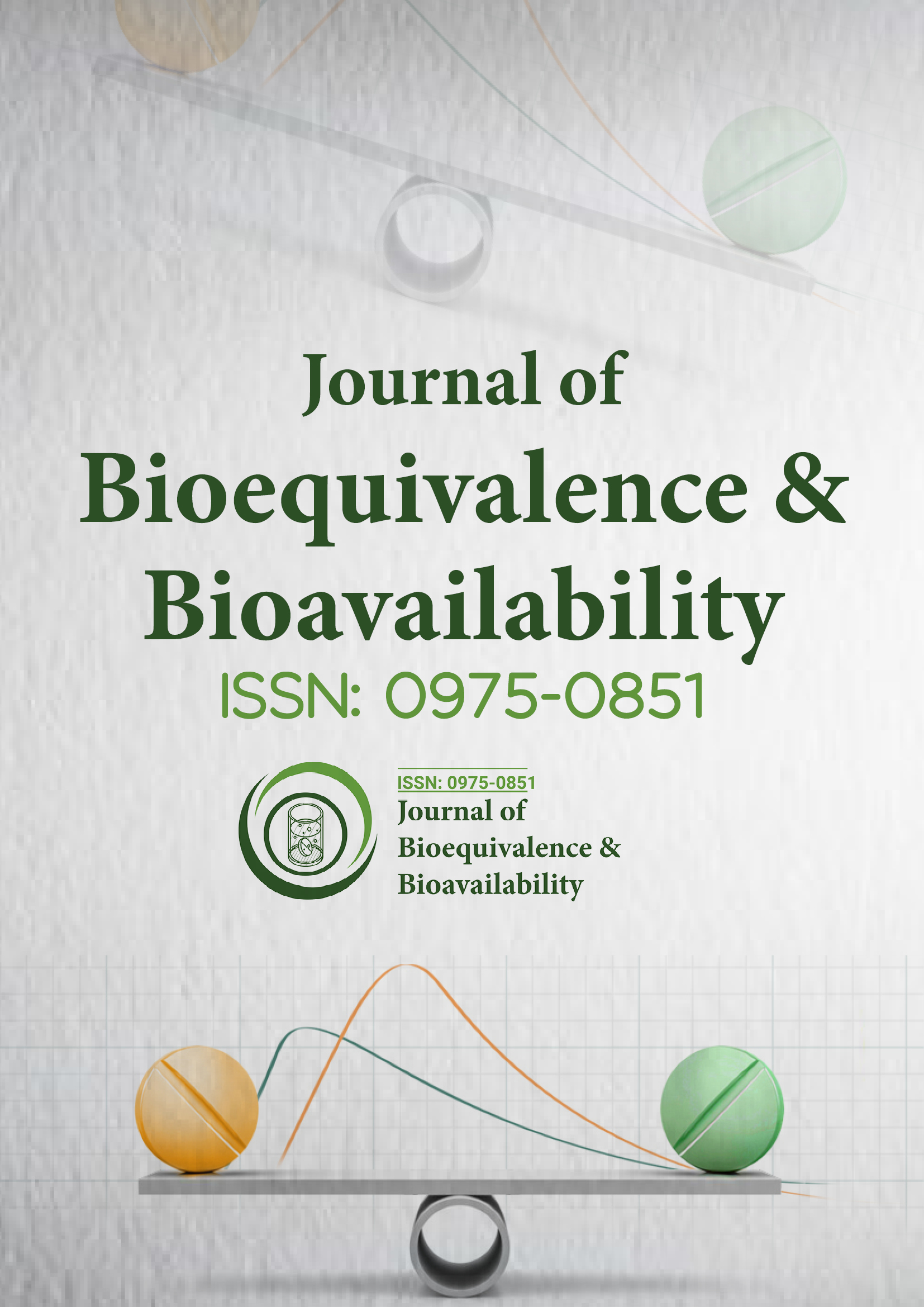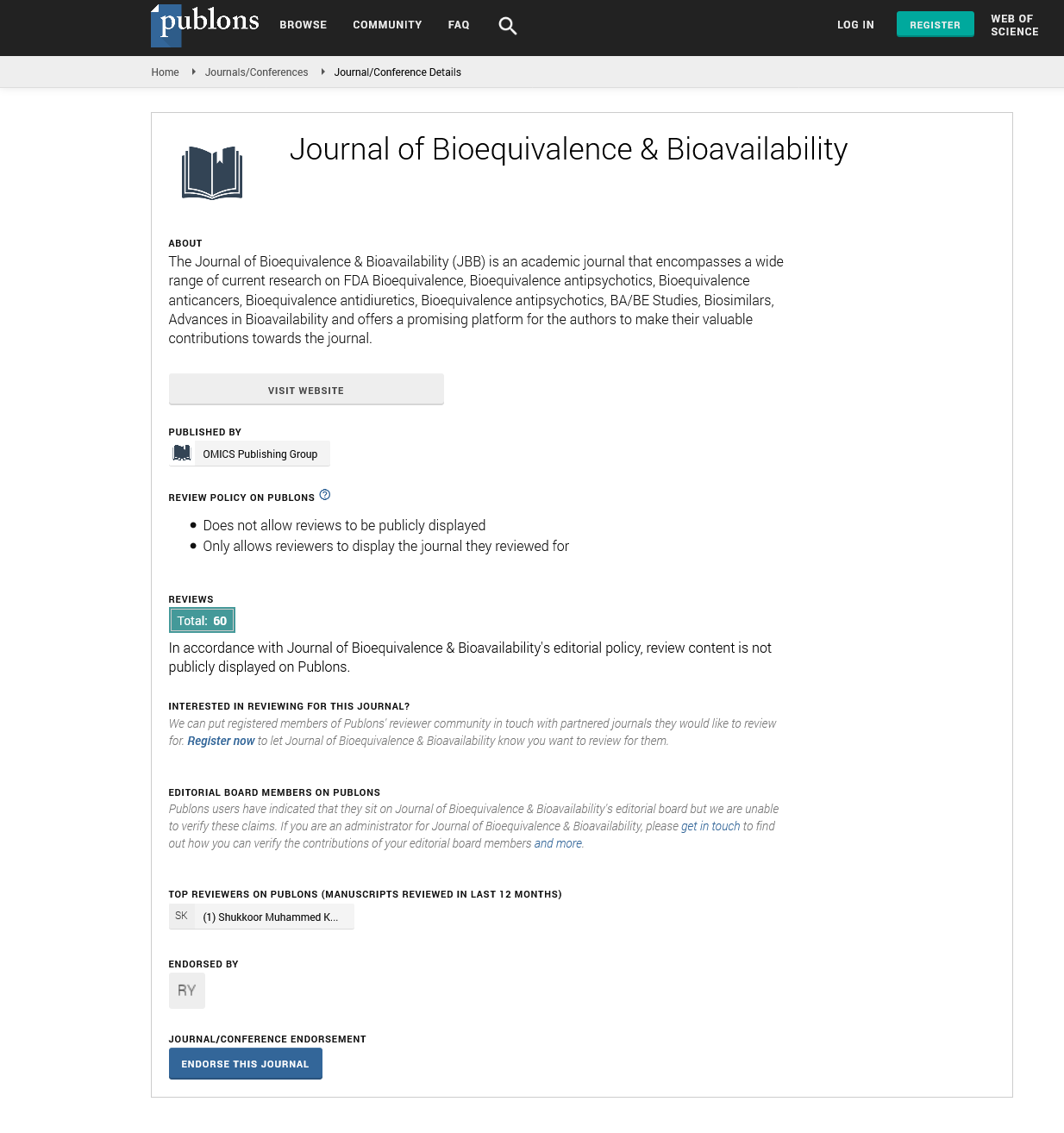Indexed In
- Academic Journals Database
- Open J Gate
- Genamics JournalSeek
- Academic Keys
- JournalTOCs
- China National Knowledge Infrastructure (CNKI)
- CiteFactor
- Scimago
- Ulrich's Periodicals Directory
- Electronic Journals Library
- RefSeek
- Hamdard University
- EBSCO A-Z
- OCLC- WorldCat
- SWB online catalog
- Virtual Library of Biology (vifabio)
- Publons
- MIAR
- University Grants Commission
- Geneva Foundation for Medical Education and Research
- Euro Pub
- Google Scholar
Useful Links
Share This Page
Journal Flyer

Open Access Journals
- Agri and Aquaculture
- Biochemistry
- Bioinformatics & Systems Biology
- Business & Management
- Chemistry
- Clinical Sciences
- Engineering
- Food & Nutrition
- General Science
- Genetics & Molecular Biology
- Immunology & Microbiology
- Medical Sciences
- Neuroscience & Psychology
- Nursing & Health Care
- Pharmaceutical Sciences
Perspective - (2021) Volume 0, Issue 0
Performance and Validation of the Skin Stripping Technique
Dwajani Sri*Received: 01-Dec-2021 Published: 22-Dec-2021
Descripition
Dermato-pharmacokinetic studies should include validation for both analytical methods and skin peeling methods. Since the method involves two parts verification, the total variability of the Dermato-pharmacokinetics may be greater than other methods. In the analysis methods, the levels of accuracy, sensitivity, clarity, and reproduction should be documented according to the prescribed procedures. Although the forearm, back, thigh, or other body part may be used for skin-removal studies, most studies are performed on the neck, for reasons of convenience. Care should be taken to avoid any damage to physical, mechanical, or chemical substances (e.g., soap, detergents, agents). Normal hydration and natural conditions should be maintained.
After bathing before treatment, a sufficient time, preferably two hours, should be allowed to get used to the skin surface. Sophisticated and usable Standard Operating Procedures (SOP) for local and drug use overdose, and skin rejuvenation should be improved. Product stability during research should be established. If the product is stable, the extent and extent of the deterioration in the area during that time must be accurately determined in order to apply the corrective factor. It is recommended that the dose-response relationship between the concentration of the drug in the form of dosage and drug dosage in the stratum corneum should be established using a skin removal method. The dose response relationship is similar to volume measurement studies performed on solid oral dose forms.
This can be easily done using three different structural strengths. These can be markets or products specially produced. Alternatively, an effective three-dimensional drug solution can be prepared for this purpose. The amount of medication in the stratum corneum at the end of the prescribed period, such as three hours, may provide a dose-response relationship and the skin peeling method should be able to detect the difference in product strength. This can be determined by using different concentrations of the dosage form as a simple solution for facial skin for a period of exposure such as 3 hours, performing a skin peeling procedure, and appropriate statistical tests comparing the strength of the drug concentrated in the stratum corneum. Using a reference product, the minimum amount of time required for the drug to reach the fullness level in the stratum corneum should be determined. The duration of drug concentration may vary by drug, drug strength category, composition, title, functional sites, circadian rhythm, ambient temperature, and humidity. These factors should be considered and managed as needed. Circadian rhythms may be present and may affect the concentration of the drug that removes the skin if the drug is also a chronic chemical (e.g., corticosteroid or retinoic acid). In such cases, the basic concentration of the endogenous compound should be measured over time from sites where no drug product has been used.
The number of subjects to be included may be found in the power calculations using the intra and intersubjective variants in the experimental studies. Because skin peeling is very sensitive to certain aspects of the research site, care must be taken to make the procedure more complete and to register a sufficient number of subjects. The following research design is based on the construction of a crossover study, in which crossover takes place simultaneously using both arms of the same subject. A crossover design in which subjects are studied twice different may also be used. If this design is used, at least 28 days should be allowed to renew the harvested stratum corneum.
Treatment areas are marked using a template without disturbing or damaging the stratum corneum/skin. The size of the treatment area will depend on a number of factors, including the strength of the drug, sensitivity of the drug, the level of drug spread, and the duration of exposure. The stratum corneum is very sensitive to certain natural substances. To avoid bias and to stay within the limits of testing and accuracy, medical sites and weapons should be randomly assigned.
Conclusion
Multi-dose research should differ from formulation, unless the same design or other design is more appropriate for valid scientific reasons, and should provide time for drug overdose if stabilization conditions are not met. If duration of drug withdrawal is required, unless the alternative is particularly appropriate for practical scientific reasons, the duration of drug withdrawal should be at least five times the life of the active ingredient of the drug or part of the treatment, or active metabolites), measured in blood or urine, or at least five times in the half-life of the pharmacological risk factor. Whenever quantitative research is done, unless the alternative is more appropriate for valid scientific reasons, sufficient dosage of the test product and reference material should be provided in accordance with the label to achieve stable conditions.
Citation: Sri D (2021) Performance and Validation of the Skin Stripping Technique. J Bioequiv Availab. S6:002.
Copyright: © 2021 Sri D. This is an open-access article distributed under the terms of the Creative Commons Attribution License, which permits unrestricted use, distribution, and reproduction in any medium, provided the original author and source are credited.

